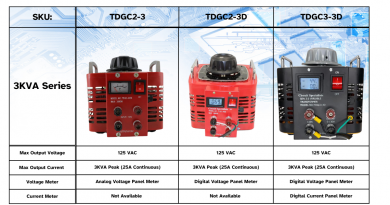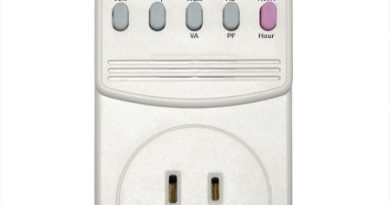DIFFERENCES BETWEEN ANALOG AND DIGITAL PANEL METERS
While digital technology is omnipresent and seemingly synonymous with “good” these days, there are still plenty of applications when analog panel meters are just as good or even better than their digital brethren. Let’s take a look at the difference between analog and digital panel meters.
While those interested in electronics often know that a digital panel meter has numbers whereas an analog panel meter has a gauge, not everyone understands the differences in operation between the two. A digital signal comes in a series of discrete steps which can seem continuous when the steps are particularly small. An analog signal, on the other hand, is continuous — even the tiniest changes will be measured and displayed by an analog panel meter.
Digital Panel Meters

Digital panel meters have numeric displays which give precise readings and are the best choice when you have a signal that only varies slightly over a large range. An analog panel meter’s needle will track any changes to the signal but, if it barely moves, you won’t even be aware of any changes.
Digital panel meters are generally ideal for smoothing out noisy signals: the display will enable you to have a clear picture of your signal’s modulation without all the noise that would send an analog panel meter’s needle dancing around the dial. Digital panel meters are also better suited for counting operations than analog meters; unlike a digital meter’s numeric display, an analog panel meter’s gauge won’t track how many times it’s passed a specific threshold.
Analog Panel Meters
Although digital panel meters are typically better for handling noisy signals, certain kinds of noise are better mitigated with analog panel meters, such as when the voltage is pulsing. An analog panel meter’s needle will swing back and forth between the the two extremes and show the pulse’s range, whereas a digital panel meter’s display will change constantly, making it difficult to track the pulse’s range.
Analog panel meters and systems are usually simpler and less expensive than their digital counterparts. Digital meters and systems are given the appearance of possessing continuous response, but this is actually a result of exceedingly small detection steps that increase the cost of the system/meter. Digital sensors are designed to read a relatively narrow range of voltages, so ones capable of processing high voltages are particularly expensive.
While digital panel meters are quite useful in many situations, analog panel meters are still widely used for various industrial applications. Analog technology is alive and well in the world of panel meters.

